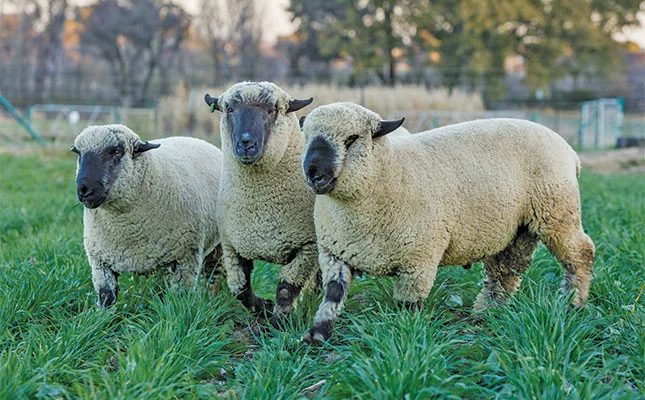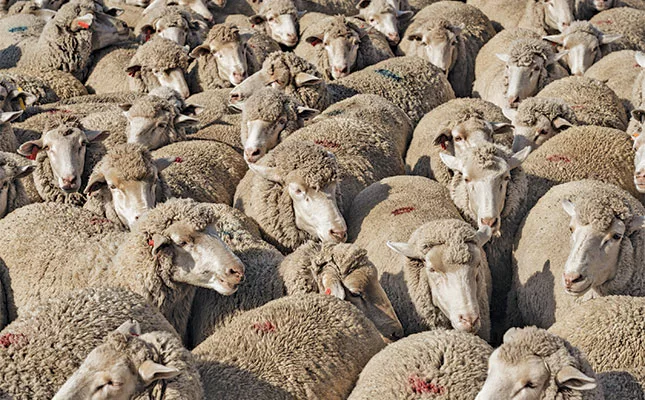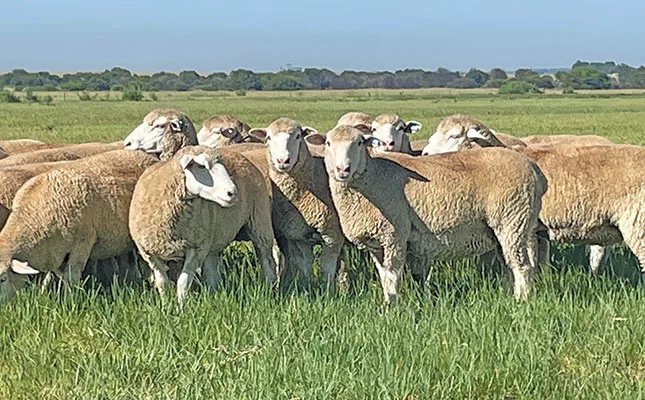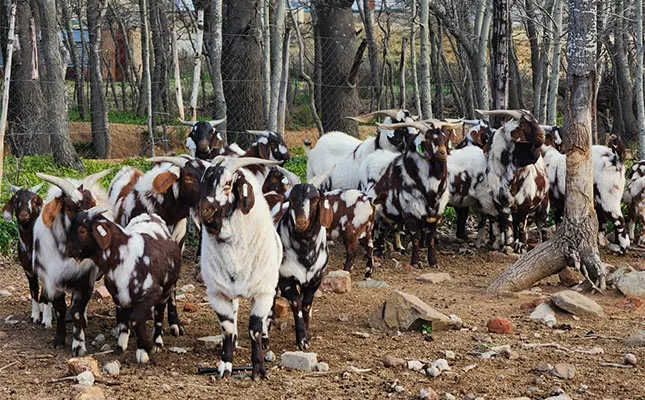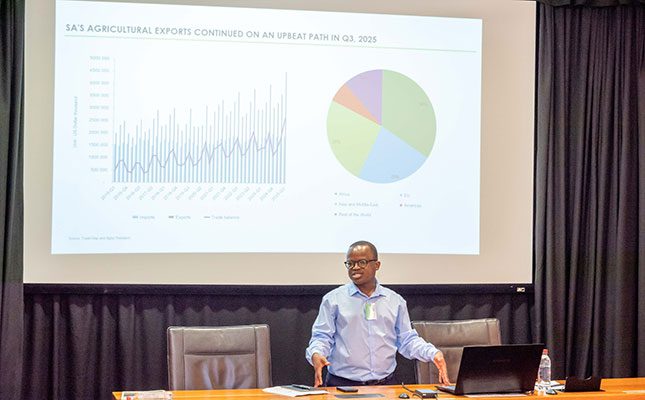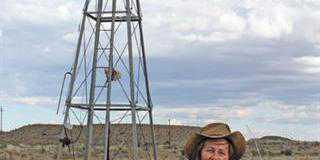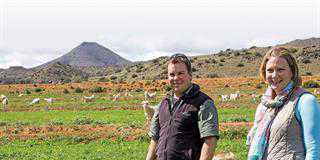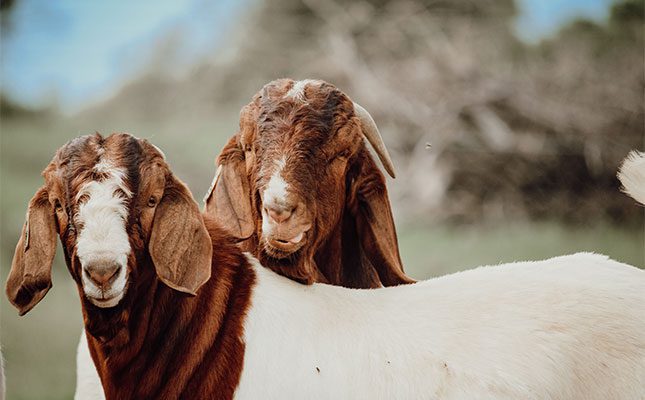
Photo: Supplied
The South African Boer Goat Breeders’ Association (SABGBA) is the umbrella organisation for three separate goat breeds, namely the South African Boer goat, the Kalahari Red and the Savanna. What are the main goals of the association when it comes to the ongoing development and preservation of these breeds?
The association’s main goals are to protect the genetic identity and history of the Boer goat, improve the breed, support breeders, expand markets and educate.
This is done through the preservation of breed purity and genetic integrity. To preserve breed purity and genetic integrity, we maintain and enforce the official breed standard to ensure the Boer goat retains its distinct characteristics (for example, conformation, pigmentation, muscling and temperament). We oversee a rigorous animal registration and pedigree verification system, often via SA Stud Book.
We prevent crossbreeding dilution and ensure the breed’s global identity remains strong and recognisable, and we also preserve foundation bloodlines that represent the core traits of the original Boer goat.
We also strive for continuous genetic and phenotypic improvement by promoting selective breeding for performance traits such as growth rate, fertility and mothering ability, carcass quality, and disease and parasite resistance.
We also encourage objective performance recording, such as Best Linear Unbiased Prediction evaluations and weight recording, and support innovative breeding programmes and the use of modern tools like artificial insemination and embryo transfer.
We also strive to develop local and international markets by strengthening the commercial value of the Boer goat as a global leader in meat production; supporting breeders in accessing both domestic and international buyers, including marketing support and international exposure; and facilitating genetic exports and participation in global shows, ensuring South Africa Boer goats remain the benchmark.

We provide education, training and youth development by offering training programmes to judges, breeders and emerging farmers. We develop and support youth initiatives, such as junior shows and youth judging competitions, and promote the responsible breeding and ethical care of goats through workshops, handbooks and field days.
The organisation upholds a transparent, member-driven governance structure; defends the breed against misrepresentation, both locally and internationally; and works with the Department of Agriculture, veterinary services and international breed societies to uphold standards.
It also ensures the Boer goat remains adaptable to changing farming conditions, including climate resilience and promoting the breed as part of sustainable, extensive farming systems that are low input and environmentally sound.
What are the key traits of the three breeds that fall under the SABGBA?
All three breeds are known for their fertility and good mothering ability. Ewes lamb in the veld and are known to bond well with their kids. They are also known for giving birth to multiples.
The breeds achieve good growth off the veld and produce balanced carcasses with minimal fat and tender, tasty meat.
They are very efficient foragers, graze well, utilise grasses and effectively control bush and weeds. They are well pigmented, parasite and heat-resistant/tolerant and have even temperaments, making them easy to manage for maximum profit.
How do these breeds differ from other indigenous goat breeds?
All three breeds were purposefully developed for meat production. The Boer goat was developed in South Africa in the early 20th century; the Kalahari Red was also developed in South Africa; and the Savanna was developed from indigenous white goats. Indigenous goats, however, like the Indigenous Veld Goat (IVG) types, evolved naturally over centuries and were not primarily selected for commercial traits.
In terms of meat production, the Boer goat, Kalahari Red and Savanna have been bred for fast growth, high-dressing percentages and lean, tender meat. While the indigenous breeds may be generally slower-grazing than these three, producing leaner carcasses, they are still prized for their resilience and meat flavour.
Indigenous goats also have high fertility, but may produce kids with smaller birthweights and have longer intervals between kiddings.

(This ram is owned by Andrew Roberts and Ju-mari Pretorius of the Maize Valley Savanna Stud).
In terms of adaptability and hardiness, the Boer goat is well adapted, but needs good management and supplementary feeding for peak performance. The Kalahari Red and Savanna are extremely hardy and thrive in arid, harsh environments with minimal input. The indigenous breeds are exceptionally well adapted to local conditions, disease-resistant and excellent survivors that require minimal care.
Management-wise, Boer goats need a higher input system in terms of nutrition, housing and healthcare, but do well being run extensively. Savannas and Kalahari Reds generally need less maintenance and are particularly good for extensive systems. Indigenous goats need low-input systems.
There is high market demand for Boer, Kalahari Red and Savanna goats, especially for meat exports and stud breeding. Indigenous goats are valuable genetically and culturally, but usually fetch lower prices unless marketed to niche markets, such as organic, traditional, or landrace meat.
How are Boer, Savanna and Kalahari Red goats different to goats from other parts of the world?
South African meat goats possess key advantages when compared to global breeds. These include faster growth and heavier weights; superior carcass quality; high adaptability to harsh climates; efficient grazing and browsing; and good fertility and maternal traits.
They are bred intensively for rapid weight gain, muscle development and high-quality carcasses, and show strong disease resistance and heat tolerance, especially the Kalahari Reds and Savannas.
In Europe, however, goats are bred mainly for milk yield and udder conformation. Asian and other African goat breeds are more multipurpose, but generally have slower growth rates.
The Boer goat has become the global gold standard for meat goats; it is exported widely and crossbred with local goats to improve meat traits. Kalahari Reds and Savannas are increasingly recognised for low- input, high-output farming.
Ultimately, these goats are known for faster growth and heavier weights; superior carcass quality; high adaptability to harsh climates; efficient grazing and browsing; and good fertility and maternal traits.
Is there an international market for Boer goat genetics and how is the association involved in this?
Yes, there is a strong and growing international market for Boer goat genetics, and we play a central role in facilitating, regulating and promoting this market globally.
Boer goats are considered the premier meat goat breed worldwide. As a result, semen, embryos and live animals from top South African genetics are in high demand across Uganda, Kenya and Ghana.
The SABGBA fulfills several roles when it comes to international markets. These include maintaining official breed standards for Boer goats; overseeing registration, performance recording and pedigree verification via SA Stud Book; supporting export protocols and liaising with government departments, such as the Department of Agriculture, for veterinary compliance; promoting and connecting breeders with international buyers and agents; and endorsing international auctions, online sales and genetic exports.
We host and support world shows, judging courses and Boer goat symposiums to grow the breed globally, and provide technical support to emerging Boer goat associations abroad. We maintain breeder reputations through official certifications and international judge accreditation.
Furthermore, we ensure animals exported meet strict health, quarantine and breed purity standards, and collaborate with exporters and artificial intelligence companies to maintain traceability and biosecurity.
The international market for Boer goat genetics is robust and expanding. Benefits to South African breeders include that global demand raises the value of elite Boer goats in South Africa, creates new markets and enhances breed reputation, and encourages continuous improvement and competitiveness within the local industry.
The SABGBA plays a pivotal role by regulating breed standards and registrations, supporting genetic exports and international breeder relations, promoting the breed through global events and education, and ensuring ethical and compliant trade in Boer goat genetics.
There have been increasingly high prices paid for quality Boer goat genetics in recent years. Could you tell us about some recent highlights for the industry?
The ram Next Level was sold privately for a world record of R2,3 million in late April 2025. Another ram, Komatsu, was sold for R500 000 earlier this year. In July 2024, two Boer goat rams were sold for R1 million each in a single day: a first in South Africa.
Is there anything else you would perhaps like to highlight?
In addition to the record-breaking achievements in Boer goat genetics, we’re proud to share that between the Boer goat, Kalahari Red and Savanna breeds, we now have over 650 dedicated members across South Africa and beyond.
Each breeder contributes uniquely to the success and growth of these exceptional meat goat breeds. At SABGBA, we are honoured to work alongside every one of them, supporting, celebrating and growing together as a unified community.
For more information visit the South African Boer Goat Breeders’ Association at boerboksa.co.za.


